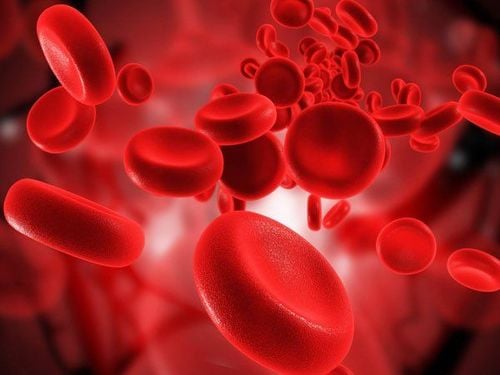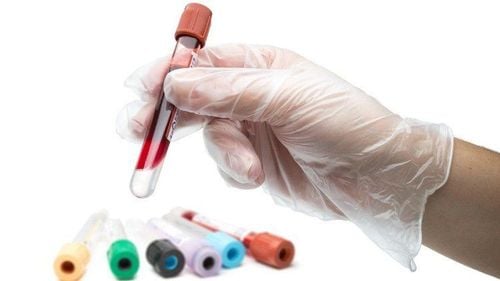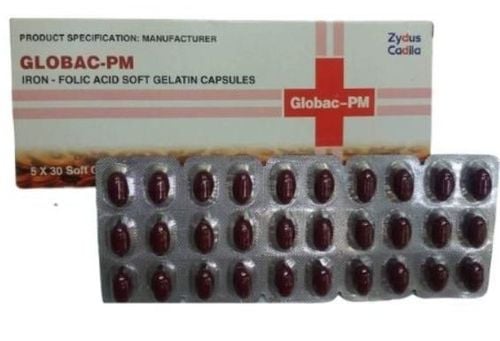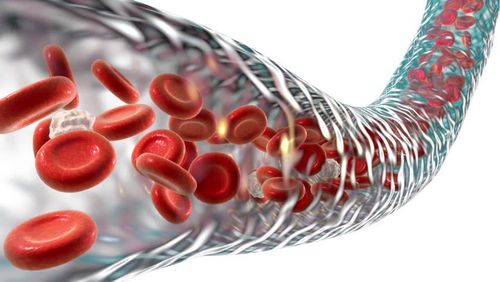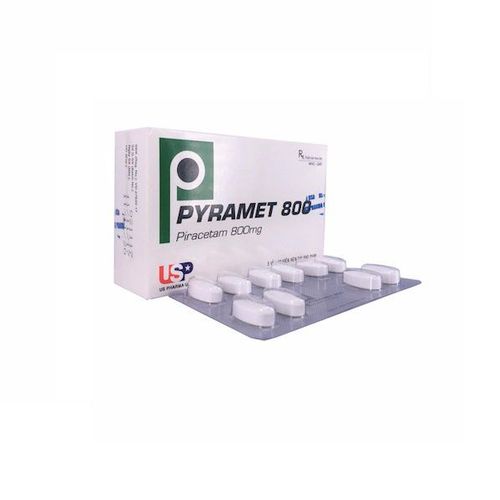This is an automatically translated article.
The article is expertly consulted by Master, Doctor Truong Thanh Tam - Pediatrician - Pediatrics - Neonatology - Vinmec Danang International General Hospital. Dr. Tam has 15 years of experience working in the field of Pediatrics.Sickle cell anemia in children is an inherited disease that usually arises when a child's body does not produce enough red blood cells naturally. When not treated early, the risk of death in is very high.
1. What is sickle cell anemia?
Sickle cell anemia is an inherited blood disorder that causes red blood cells that are originally round to become hard and deformed to look like a sickle. At that time, these sickle-shaped red blood cells cannot move through the blood vessels to supply oxygen to the body. They get stuck, causing pain and damage to organs, and increasing the chance of infection.In addition, sickle red blood cells only last about 10-20 days, instead of 120 days like normal red blood cells. Because the body has trouble replacing these cells quickly enough, anemia can result.
2. When does sickle cell anemia in children occur?
Sickle cell disease can be passed on from both parents to their children. A child is born with two genes that make hemoglobin, one from the mother and one from the father. If that child inherits the hemoglobin S gene from both parents, he or she will develop sickle cell anemia, also known as hemoglobin SS disease.In the event that a child is born with a hemoglobin S gene and a normal hemoglobin A gene, he or she will not develop sickle cell anemia, but the child will be a carrier of the gene that can pass this trait This will be passed on to my children later. This condition is also known as SCT (sickle cell trait).
When a baby inherits a hemoglobin S gene and a gene for another type of hemoglobin abnormality, it can lead to another form of sickle cell disease, such as hemoglobin SC disease or S-beta thalassemia.
According to research, sickle cell anemia affects more than 72,000 people in the United States, most of whom are of African descent. In fact, 1 in 500 African-Americans has the disease.
Scientists think the sickle cell gene is more common in tropical Africa, because having these traits may confer certain benefits, such as protection. fight malaria - a disease caused by a parasite living in red blood cells that has plagued the people here since ancient times.
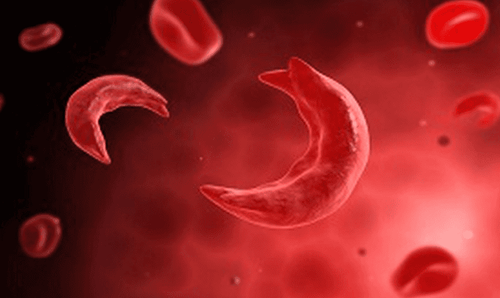
3. Can a carrier get sick?
A carrier is someone who has one sickle cell gene and normal genes in the body. These subjects usually do not have sickle cell anemia and do not have any specific symptoms of the disease.However, carriers are likely to face certain health risks under certain extreme conditions. For example, exertion at high altitudes can put sickle cell carriers at risk of dehydration, heat stroke, or even blood in the urine.
If your child inherits one hemoglobin S gene and one hemoglobin A gene, he or she will most likely produce both types of hemoglobin, in which normal hemoglobin will keep blood circulating smoothly throughout the body. In addition, this child will have a 50/50 chance of passing the sickle cell gene to his or her children.
4. How is sickle cell anemia diagnosed in children?
Performing a blood test can give the doctor a complete look at the hemoglobin in your child's body. Currently, most countries around the world require screening for sickle cell anemia at birth, along with other routine newborn screening tests.Besides, blood test also helps to determine if your baby is a carrier of sickle cell trait. In the case of children who have not been screened at birth, parents should still have their children tested as soon as possible.
5. Symptoms of sickle cell anemia in children
Children with sickle cell anemia are at increased risk for serious symptoms and complications. In addition to chronic anemia that makes the baby's body weak and tired, sickle cell anemia in children can also cause some problems such as:Clustering pain:
The pain often occurs. sudden and intense in a certain part of the body where the sickle cells get trapped and block the flow of oxygen to the tissues. This condition can occur in any organ, most commonly in the fingers and toes (hand-foot syndrome), or in the chest and long bones of the body. This intense pain can lead to hospitalization or medical assistance to help the child feel more comfortable. In general, attacks may occur infrequently, about once a year, or more than 15 times a year.

Sickle-shaped red blood cells can sometimes build up in the spleen, leading to a sudden, dangerous drop in hemoglobin and worsening anemia. . Due to the increased blood volume, the spleen becomes enlarged and painful, this is known as splenic sequestration. If splenic stasis occurs frequently, it can lead to the risk of having to remove the damaged spleen. This problem most commonly affects children under 4 years of age. When the spleen has to be removed, although the child's body can still function, it will have a harder time fighting the infection.
Have viral or bacterial infections
A healthy spleen protects the body against infection by killing bacteria in the blood. When sickle red blood cells damage the spleen, the organ cannot function as smoothly as it should. As a result, children with sickle red blood cells are more susceptible to infections, especially streptococcal pneumonia. In fact, a pneumococcal infection is an extremely dangerous disease that can quickly cause death. So it's important for parents of children with sickle cell disease to be on the lookout for signs of infection, including fever, vomiting, rapid breathing, lethargy, cough, or pain.
Stroke:
Can happen when sickle-shaped red blood cells block blood vessels in the brain. According to research, about 10% of children with this disease have a stroke, and it is most common between the ages of 4-6. A stroke in children will need to be treated with a red blood cell transfusion to prevent further damage. Some common signs of a stroke include severe headache, dizziness, trouble speaking, loss of vision, coma, sudden weakness, numbness in the face, arm, or leg (usually half of the body). ).
Aplastic anemia
This condition occurs when a child has an infection (usually human parvovirus B19) that stops red blood cell production for about 10 days. It's usually not too serious if the person with aplastic anemia is a healthy person, because normal red blood cells can live for 120 days. However, for children with sickle cell disease, it can cause their red blood cell count to drop dangerously because sickle cells in their body can only live for 10-20 days. . Common symptoms of aplastic anemia often include headache, fever, paleness, coma, or fainting. At this point, a blood transfusion can help raise the baby's blood count until the body starts making red blood cells again.
Acute chest syndrome
This is a common complication of sickle cell disease caused by a respiratory infection or by sickle red blood cells getting trapped in the lungs. Similar to pneumonia, acute chest syndrome can cause shortness of breath, chest pain, fever, and even death if not treated promptly. In fact, acute chest syndrome is the leading cause of death in patients with sickle cell anemia.
Eye problems
If the retina at the back of the eye does not receive enough oxygen from the blood, it can seriously affect vision and even lead to blindness. To prevent vision loss in children with sickle cell anemia, the doctor may recommend laser treatment.
Jaundice:
In the body, the liver keeps the function of filtering harmful substances out of the blood. However, when the liver has trouble keeping up with the rapid breakdown of red blood cells, bilirubin (a pigment caused by the breakdown of hemoglobin) builds up there. This can cause yellowing of the eyes and skin.
If a child is otherwise healthy but suddenly feels unusual, home treatments such as giving the child plenty of fluids, or pain medication are often recommended before taking the child to the hospital. However, in the case of a child with sickle cell anemia, the risk of a life-threatening infection is often very high, so you should contact your doctor immediately if your child shows the first signs of the disease.
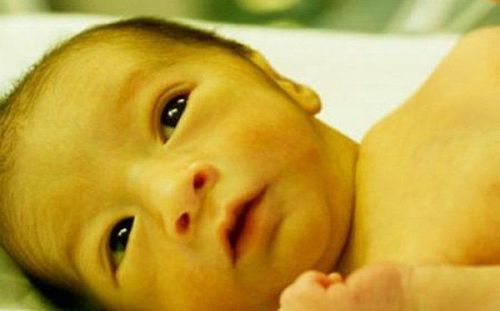
6. Treatment options for sickle cell anemia in children
Currently, there is no definitive treatment for sickle cell anemia or other forms of sickle cell disease in children, but doctors can help ease your baby's pain and prevent infections. coincide.For pain that is not so severe that can sometimes be controlled with pain relievers, such as acetaminophen and anti-inflammatory drugs. In cases where your child is experiencing severe pain, there is a high chance that your child will need to be hospitalized for monitoring and treatment, especially if your child cannot drink water because of vomiting or too much pain.
To relieve your baby's pain, the doctor will give fluids through an intravenous (IV) tube, as well as pain medication. Sometimes, a blood transfusion is used to help prevent strokes, treat anemia, and protect a child's spleen.
In addition, penicillin has been shown to reduce the risk of infection by up to 85% in children with sickle cell anemia. So your baby can use this medicine every day from about 2 months old until the child is at least 5 years old.
In addition, children with sickle cell anemia will receive the same routine immunizations as other children, including pneumococcal conjugate vaccine, or PCV7 – given at 2, 4 , 6, 12 to 15 months to protect children from streptococcal pneumonia. Furthermore, children can also be given an additional pneumococcal vaccine – PPV23 (Pneumovax) to treat related bacteria at 2 and 5 years of age. Meningococcal vaccine can be given after a child is 2 years old to protect against Neisseria meningitidis, a bacteria that can cause serious blood infections or meningitis. In addition, children should also be vaccinated against the flu every year.
Your doctor may also recommend folic acid supplements to stimulate the bone marrow to make new red blood cells.
7. Can sickle cell anemia in babies be detected before birth?
Currently, we can completely detect sickle cell anemia in babies before birth through prenatal testing.As early as the first trimester, doctors may take a sample of placental tissue (chorionic villus sampling or CVS) to find out if your baby is carrying the genes that lead to sickle cell anemia. sickle cell trait or not. After 17 weeks, pregnant women can have an amniocentesis to test the amount of amniotic fluid.
8. How to prevent sickle cell anemia in children
You can help keep your baby healthy by providing adequate nutrition, regular cleaning and regular doctor visits, and balancing play and rest.Also, give your child plenty of fluids, avoid stress, and limit exposure to extreme cold, as these conditions can contribute to sickle cell crisis. In addition, you should also keep your child away from anyone who is sick to prevent the risk of infection.
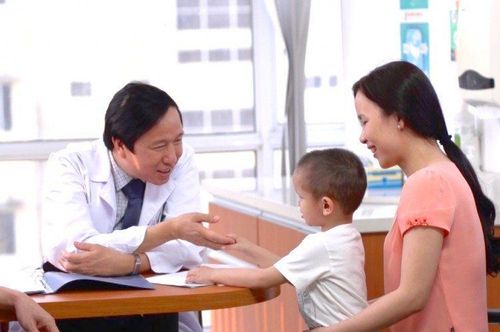
In the case of children traveling by plane, make sure you keep them in a pressurized cabin. Being in a non-pressurized cabin environment can cause a sickle cell crisis due to low oxygen levels in the air. The same risk applies if children are exposed to high altitudes.
Vinmec International General Hospital is a high-quality medical facility in Vietnam with a team of highly qualified medical professionals, well-trained, domestic and foreign, and experienced.
A system of modern and advanced medical equipment, possessing many of the best machines in the world, helping to detect many difficult and dangerous diseases in a short time, supporting the diagnosis and treatment of doctors the most effective. The hospital space is designed according to 5-star hotel standards, giving patients comfort, friendliness and peace of mind.
Please dial HOTLINE for more information or register for an appointment HERE. Download MyVinmec app to make appointments faster and to manage your bookings easily.
Reference source: babycenter.com




